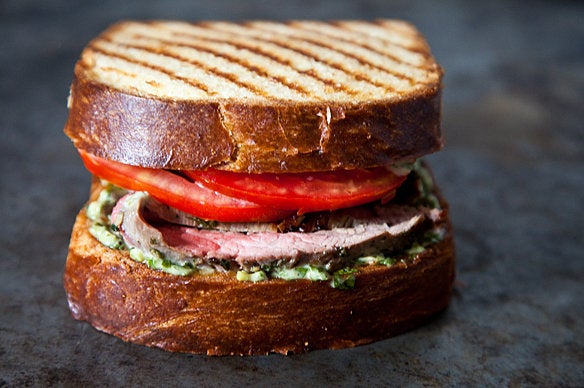
Most of us were taught as children that there are four kinds of tastes: sweet (which we love), sour, salty and bitter. But there has been a gaping hole in all of our educations. One of the most important and most glorious flavors we experience daily -- the one that makes brothy soups so heart-warming, seared meats so satisfying and aged cheeses so delightful -- has long been ignored. Actually, its very existence was disputed until 2002, despite the fact that we taste it every single day. That flavor is what we now refer to as umami.
Escoffier, the famous French chef from the late 1800s, believed there was a savory fifth taste which he declared was the secret to his success. It was most notable in his creation of veal stock -- which was basically just concentrated umami flavor. Across the ocean, in Japan, that same fifth taste was also being noted.
Umami, which is Japanese for "pleasant savory taste" or "yummy", was pinpointed by Japanese chemist and food lover Kikunae Ikeda in the 1900s. Ikeda noticed when eating a bowl of dashi (seaweed soup) that he was tasting something delicious that could not be described by one of the four taste categories. With his science background, he was able to take this observation to the lab and find out exactly what this "umami" flavor was.
Technically, umami refers to glutamate -- a type of amino acid, which occurs naturally in many foods such as meat, fish, vegetables and various dairy products. When glutamate breaks down -- when it dies or ferments, which happens when you cook a piece of meat, or when cheese ages, or when a tomato ripens under the sun -- it becomes L-glutamate, and that's when things start to taste really good.
Ikeda is famous for saying: "Those who pay careful attention to their tastebuds will discover in the complex flavor of asparagus, tomatoes, cheese and meat, a common and yet absolutely singular taste which cannot be called sweet, or sour, or salty, or bitter..." It's umami. (And aged Parmesan cheese has particularly high levels of it.)
Ikeda used what he learned about taste and found a way to commercialize it. It's how the world came to know MSG (monosodium glutamate)-- but that's a story for another day.
